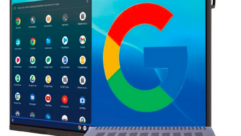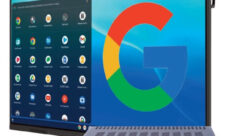
Technology Showcase:
Large LCD Displays
Jun 1, 2006 12:00 PM,
By Jay Ankeney
The market for LCD panels larger than 40in. is expanding, and so are the offerings.
Clarity Bay Cat
Large-format LCD displays larger than 40in. in diagonal screen size are rapidly gaining in popularity in commercial applications such as digital signage and corporate conference rooms. Thanks to the growing popularity of large-format home TVs, the economies of scale are at work for LCD products. LCD manufacturers are bringing down prices for professional screens; at the same time, more demanding applications — even some extending into the broadcast arena — are expanding their feature sets.
Pacific Media Associates, the global market information expert on large-screen displays, estimates that the overall professional flat-panel display market has grown 183 percent in the last two years. More importantly, the LCD segment of that market has increased 387 percent. Plasma still dominates, but LCDs are catching up as their prices in the larger-than-40in. screen sizes are falling in line (somewhat) with those of plasma displays. Another provider of industry market intelligence, iSuppli, estimated in its “Signage and Professional Market Tracker” of 4Q 2005 that about 109,000 LCD displays would be sold to the professional and signage market in 2006 (not including home TVs), and this figure would grow to almost 450,000 screens by 2009.
LCD ADVANCES
Several years ago, plasma displays had surpassed the 40in. size while LCDs were still in the 30in. range. Today, several new LCD production lines in Taiwan, Korea, and China can cut larger pieces out of the mother glass during manufacturing; even 46in. LCD panels are now coming onto the market, and the 50in. barrier is going to fall soon. As of April 2006, the three biggest manufacturers of all sizes of LCD displays were LG, Philips, and Samsung with 22 percent of the market each, followed by AU Optronics (a BenQ company) with a 19 percent share.
Large-format LCD displays have rapidly been gaining high-resolution capabilities, especially TFT LCDs, which use thin-film transistor technology to improve their image quality. TFT is a type of LCD flat-panel display screen in which each pixel is controlled by one to four transistors. The TFT-LCD technology produces the best resolution of all the flat-panel techniques, but it is also the most expensive.
LCD has always enjoyed certain viewing advantages in some environments. Because of their non-reflective covering layer, LCD displays have always presented less glare, as compared to other large-format display technologies, in areas with excessive ambient lighting. New LCD crystals are providing faster response times that eliminate the smearing that had been a drawback in the past. On the horizon is the use of LED backlights as an illumination source, which promises to improve the black level response of the LCD screen. With the ability to display greater resolutions in the larger screen sizes, LCD screens can now present native high-definition images up to a very data-intensive 1920×1080, even progressively scanned rather than interlaced.
In fact, at the recent National Association of Broadcasters convention this past April in Las Vegas, at least a half dozen LCD display manufacturers were exhibiting screens that are claimed to rival CRTs as true broadcast production monitors. As many markets, especially the European Union, are insisting on reduced lead content in electronic components, there is a strong move to find alternatives to the leaded glass inherently needed for safe CRT operation. Already, CNN, ESPN, and Turner Broadcasting have installed mission-critical LCD displays in their studios.
Manufacturers releasing LCD displays larger than 40in. are competing on technology and features, providing bigger and better screens for digital signage and many other professional installations.
THE MARKET

Sampo LME-42X8
The Bay Cat is a 46in. display from Clarity Visual Systems that combines ultra-high resolution (1920×1080) with configurable I/O. The large-format display can come with an optional protective front faceplate to ensure durability for a wide range of digital signage applications. Its flat-panel form factor makes the Bay Cat less than 4in. deep. The screen offers 450 nits of brightness with a 900:1 contrast ratio. Its long-life intelligent sensor adjusts the Clarity Bay Cat’s backlight to ambient lighting conditions. The screen’s 170-degree viewing angle allows it to be seen in any environment through an anti-reflective/anti-glare protective glass faceplate. The Clarity Bay Cat features mounting and networking options and a flexible Message In Picture (MIP) capability.
For standalone and tiled applications in space-constrained environments, the Clarity Bobcat is a 40in. direct-view display whose fanless design offers high performance with 1366×768 resolution, 500 nits of brightness, and a wide 170 degrees (±85 degrees horizontal and vertical) viewing angle.
If you need a large LCD screen to operate in an environment with a lot of ambient light, Daktronics offers its ProCast line of LCD displays in 40in. and 45in. sizes. At 1200 nits of brightness, Daktronics’ ProCast high-brightness LCDs outperform other screens, which can wash out in bright conditions. Their LED backlighting creates more striking, vibrant colors than LCDs with common fluorescent backlight units. With an extended lifetime of 60,000 hours and no permanent image burn-in, the ProCast LCDs’ durable cabinet design and vandal-proof glass make them suitable for indoor and outdoor commercial applications. Each ProCast display features a built-in V-Net remote player that is addressable to allow for every display on the display network to show unique content or all displays to run the same programming.
It’s no wonder that the latest digital signage product launched by Global Display Solutions (GDS) has a unique, attractive look. Architect Michele De Lucchi has designed the new 46in. G460 LCD display, including its removable frame, which enables multiple displays to be paneled together behind a single pane of anti-glare glass. The LCD display is even aesthetically pleasing from the back because no cabling is visible. The G460 screen has a 16:9 aspect ratio, a native WXGA (1366×768) resolution, 600cd/m2 brightness, a contrast ratio of 800:1, and a 170-degree viewing angle.
At April’s NAB 2006 convention, JVC added the GM-H40L2GU 40in. high-definition LCD monitor to its ProHD line, expanding its family of flat-panel displays. The GM-H40L2GU is compatible with all video formats such as analog, DVI-D, and optional HD-SDI and accepts multiformat signals including 1080p24/24sF. For digital signage applications, this JVC LCD display features interchangeable input modules to accept any professional content formats. The display’s slim design allows it to be mounted in a variety of locations and positions, either flush against a wall or mounted from the ceiling using standard VESA-compliant mounting brackets. The monitor also features an easily replaceable bezel, a built-in Eco sensor that adjusts brightness for various ambient light conditions, and front control lock to prevent unauthorized tampering in public areas.

Sony FWD-40LX1
The M4200C-BA 42in. LCD widescreen 16:9 HDTV monitor from LG Electronics delivers 1366×768 resolution for extremely detailed imagery. Its 1100:1 contrast ratio allows sharp contrast between light and dark images, and the 500cd/m2 brightness renders an exceptionally bright picture over a 178-degree viewing angle — even in light-drenched environments, thanks to the monitor’s new Super-IPS (in-plane switching) technology. It also offers a new temperature sensor, lamp fault sensor, and split zoom for a videowall effect. Its inputs include high-resolution component, S-Video, DVI-D with HDCP, and D-Sub 15-pin, along with multiple AV inputs for DVD players, VCRs, computers, and video game systems.
Natural color matrix adjustment technology ensures vibrant colors and realistic picture quality in the 46in. MDT461S LCD display from Mitsubishi. The panel features 1366×768 WXGA resolution with high brightness (450cd/m2) and contrast (800:1). The MDT461S has a menu-accessible schedule for around-the-clock automated power-on/off and input source selection. Its image rotation prevents content from being displayed in a stationary state in order to prevent burn-in. The displayed image is slightly expanded and moves periodically up, down, left, and right with movement options of approximately ±10mm from original position at user-set intervals.
NEC’s MultiSync line of large-screen LCDs includes a 46in. display, the LCD4610, and the 40in. LCD4010 model. All MultiSync products include 20 features of NEC’s Digital Signage Technology Suite, which helps create new options for those in the information display market. Among them, 1366×768 (WXGA) resolution provides a true 16:9 aspect ratio, and XtraView viewing technology allows a viewing angle up to 176 degrees (±88 degrees vertically and horizontally) to provide an undistorted view of the screen for spectators not directly in front of it. Multiple applications can be viewed simultaneously using the displays’ picture-in-picture capability.
All MultiSync large-screen LCDs from NEC are available in both standard and IT versions. The value-driven IT version features only PC inputs, while the standard version includes AV inputs for a broader set of applications. Rapid Response technology allows NEC MultiSync LCDs to display virtually uninterrupted and undistorted high-speed, full-motion video without ghosting or image trailing.

NEC LCD4610
With the goal of controlling costs while offering high performance for a wide range of applications, Philips has introduced its WXGA LCD monitor, the BDL4211V. It’s a network-controlled 42in. LCD monitor that offers 1366×768 resolution with an anti-glare polarizer for sharper display. The Philips BDL4211V has a 600:1 contrast ratio, 176-degree viewing angle, and 600-nit brightness that automatically adjusts to ambient conditions. The display features fanless operation in landscape mode. It can also operate in portrait mode. In case more than one screen needs to share the same input signal, VGA loop-through on the BDL4211V offers a cost-effective way to amplify the VGA input signal and make it available on a VGA output connector, which can be connected to the next monitor. The BDL4211V’s intelligent power management features employ energy-efficient technologies to reduce power consumption and significantly lower the total cost of ownership.
Like all Sampo LCD and plasma monitors, the LME-42X8 42in. LCD monitor includes an RJ-45 Ethernet port through which users can connect multiple Sampo flat-panel displays to a network infrastructure. That way, by using Sampo’s new DisplayNet software, administrators can operate and manage a network of displays via IP. With DisplayNet they can handle scheduling of multiple displays from a single computer through an easy-to-use graphical user interface. Each unit has its own built-in web server that is individually IP-addressable. Sampo’s LME-42X8 offers brightness of 500cd/m2, 1366×768 resolution, multi-scanning PC monitor support up to 1280×1024, and dual HD component video inputs.
The Samsung SyncMaster 460P is a 46in. analog/digital LCD display that offers an 800:1 contrast ratio, 1366×768 resolution with a horizontal/vertical pixel pitch of 0.249mm, Xtrawide 170-degree horizontal/vertical viewing angle, and dual inputs to accommodate either an analog or a digital signal. Samsung also offers the SyncMaster 400P 40in. monitor, which is also a dual-input analog/digital LCD display. The 400P boasts a contrast ratio of 800:1, 1366×768 active native resolution, pixel pitch of 0.6735mm, and an Xtrawide 170-degree horizontal/vertical viewing angle. The 400P also features DNIe (Digital Natural Image engine), an exclusive image-compensation algorithm for brighter and clearer images. Other special features include Picture-in-Picture/Picture-by-Picture/Picture-on-Picture, auto lamp control, auto adjustment, vertical input connection, and cabling clean touch.
The Sharp PN-455 LCD monitor was developed specifically for commercial use, with a 45in. diagonal screen size and a 16:9 aspect ratio. Sharp’s PN-455 monitor is one of the few capable of displaying native 1920×1080 resolution from analog RGB, digital RGB, or HD video sources. Its Ultra-High Aperture (UHA) LCD achieves a brightness of 500 nits while maintaining low power consumption. Proprietary Sharp technology contributes to the display of crisp text, long reliability, and protection against burn-in. The PN-455’s full complement of inputs and outputs include DVI-D, RGB analog, component, composite, and S-Video.

Sharp PN-455
Sony large-panel LCD displays incorporate the company’s WEGA Engine technology to deliver remarkable resolution and image clarity. Sony’s FWD-40LX1/W is a 40in. TFT active-matrix LCD panel with high brightness and contrast, and a fast 16ms video response time. The LCD technology in Sony’s FWD-40LX1/W is resistant to burn-in, ensuring long life when displaying static images. Its intelligent digital processing system delivers superb picture quality by minimizing the signal deterioration that’s caused by digital-to-analog conversion. Optional network cards and boxes let you centrally control, deliver, and troubleshoot digital content across a standard IP network to one or hundreds of networked displays.
TVLogic has just released its biggest LCD display, the 46in. LVM-460W/D, as part of its line of multiformat monitors. Using dual-link HD-SDI inputs, each carrying 1.5Gbps, the LVM-460W/D is the first large-size LCD display to receive a combined serial digital data flow of 3Gbps. This is enough to give the screen 4:4:4 RGB and 1920×1080p60 compatibility, which puts it solidly in the world of HD broadcast requirements. TVLogic’s color calibration utility provides a unique interface for proper color alignment and matching of multiple TVLogic LCD displays. Two probes allow for professional-grade calibration to suit various applications, budgets, and calibration speed requirements. TVLogic’s Digital Signal Processing Algorithm technology delivers superior picture quality with all types of video media. Its whole LVM series of professional LCD monitors comes standard with DVI (or VGA), HD-SDI, SD-SDI, and analog inputs.
ViewSonic’s 42in. widescreen N4200w LCD display has an integrated IP controller to accept digital signage content over the Internet. Its dual HDMI/HDCP digital inputs ensure the best signal possible, and its DNX video signal processing provides superior picture quality through precision de-interlacing, 10-bit color processing, advanced scaling, and Pixelboost for smoother, sharper full-motion video with rich colors. The N4200w features a brightness of 500 nits and a contrast ratio of 1000:1. ViewSonic’s 42in. N4200w has support for HDMI with high-definition content protection (HDCP) and analog (VGA) signals, plus component, S-Video, and composite video inputs.
For More Information
Clarity Visual Systems
www.clarityvisual.com
Daktronics
www.daktronics.com
Global Display Solutions
www.gds.com
JVC
www.jvc.com
LG Electronics
www.lgcommercial.com
Mitsubishi
www.mitsubishi-presentations.com
Philips
www.bds.philips.com
Samsung
www.samsung.com
Sharp
www.sharpusa.com
Sony
b2b.sony.com/solutions/home.do
TVLogic
www.tvlogic.co.kr
ViewSonic
www.viewsonic.com










